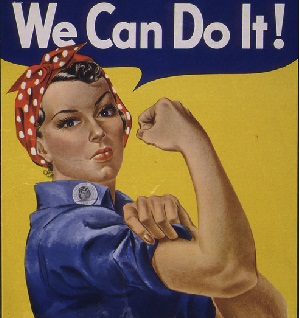By April Bang
Last month, we celebrated International Women’s Day. As women raised banners and gathered to march in the streets or share stories of achievement in a classroom, the message of empowerment for women was clear along with the encouragement for women to lead. While momentum continues to build with policy changes and more women arising to leadership, women remain underrepresented among leaders in organizations and society.
Despite participating in the marches, empowerment activities, and leadership trainings, many other women nevertheless remain hesitant to lead even when leadership opportunities are offered to them. Despite on-going progress in gender equality, and the seemingly more enabling environment around them, why might some women still refrain from leading?
Over the years, experts have acknowledged that holding a positive view of self helps with managing competing roles. To understand how women’s own view of their gender affects how they experience leadership roles, researchers conducted three studies among a diverse sample of alumnae from major business schools. Their research revealed that women who held more positive views of their gender experienced and perceived less conflict between their identity as a woman and their identity as a leader. The reduced sense of conflict between these identities was, in turn, associated with lower levels of stress, higher life satisfaction, and more positive emotions with leading.
Based on their results, researchers advocated for organizational and leadership development practices around improving women’s own regard for their identity as women. They additionally called for a more holistic approach to coaching around women’s psychological wellbeing and professional motivation that addressed not only women’s leadership skills and professional effectiveness, but also how positively they viewed themselves as women. According to the researchers, women who think highly of their gender allows them to integrate their multiple identities (as women and as leaders) and feel more authentic in leading.
Findings from this research may also be useful to potential leaders from other historically underrepresented groups—for example, racial and ethnic minority populations—who could advance diversity in leadership across sectors by leading.
Reference:
Karelaia, N., & Guillén, L. (2014). Me, a woman and a leader: Positive social identity and identity conflict. Organizational Behavior and Human Decision Processes, 125(2), 204-219.
